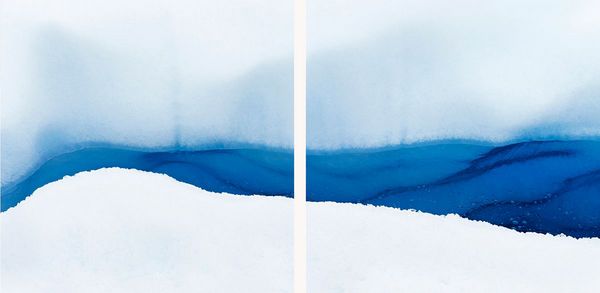
‘It’s like being on another planet’: photographer Jonathan Smith gets up close with one the world’s great glaciers
Jonathan Smith’s sublime photographs transport us to the Perito Moreno glacier in Argentina, revealing detailed glimpses of an awe-inspiring body of ice
Words Lauren Heinz
Photography Jonathan Smith

British photographer Jonathan Smith initially started his career with an interest in street photos, creating black-and-white, shoot-from-the-hip images from New York while assisting renowned photographer Joel Meyerowitz. It was only when he started focusing on architecture, and later landscapes, that Smith found a subject he was truly confortable with.
Smith’s large format photographs of remote landscapes, devoid of people, began with a focus on the rivers and streams of North Iceland and led him to a glacier in Patagonia, Argentina. The resulting photographs are a meditative study of an extreme and otherworldly environment, one that’s shaped by the immense power of ice.
Here, he opens up about what glaciers mean for him, and the way we look at the world.


Gaggenau: What initially drew you to the subjects of streams and rivers?
Jonathan Smith: I went to Iceland in 2013 for a week and I was blown away by it. It has such a fascinating and unusual landscape. I later found out about an artist’s residency [in Iceland] and spent five weeks in the most northern part of the country. That allowed me to start looking at the streams that pass through the fiords. I was using a lot of long exposures so I would get these contrasts where the streams emerge from landscapes that often don’t have horizons. When I got back and looked at what I had, it was one of those ‘aha!’ moments you get as an artist.
Gaggenau: How did this lead to you going to Patagonia to photograph a glacier?
JS: I had an exhibition of the stream and river photographs and I met a collector who was very interested in my work. He started talking to me about Patagonia and mentioned the Perito Moreno glacier, which my work reminded him of. That was where the idea started and I went to Patagonia, organising a trip to explore the glacier. Perito Moreno is extraordinary, and very hard to get to.
Gaggenau: What was it about this particular glacier that fascinated you?
JS: It’s one of the fastest-moving glaciers on the planet – it moves about two metres a day: constantly cracking, moving and changing. Because of its movement it’s continually breaking off in the front. Every 10 or 15 minutes you’ll see a chunk of ice separate itself, creak, groan, and then splash into the water. You’re about two kilometres away and you’re thinking, ‘that’s a 60-metre high piece of ice that’s falling off!’ That was something I was really struck by – being down there – how insignificant we really are in terms of the grand scheme of the Earth.

‘ I was struck by how insignificant we are in the grand scheme of the Earth ‘

Gaggenau: How did the light of the glacial environment inform your work?
JS: It was fascinating to see the intense colour of this particular glacier; a bright crystal-blue light emanates from it. The ice is so compacted that the air has been almost completely compressed out. The more compressed the ice, the more intense the blue, because when light passes through ice, it absorbs all of the colours in the spectrum apart from blue. When you see it for the first time it looks unreal because it’s so bright. I tried to recreate that in the imagery.
Gaggenau: Your work plays with perspective so the viewer is unaware of the scale of the imagery. What are your reasons behind this?
JS: These landscapes present you with such vast scale, you can never really experience it unless you’re there, and even then it’s still very hard to understand how big and endless it really is. I started to look at the details of the glacier in a way where the scale becomes abstract. It sort of came naturally because when you’re there the perspective is so strange. And of course the light is playing this game with you. I think it’s the nearest thing to being on another planet.


Gaggenau: Your imagery has been described as meditative and sublime. Is there also an underlying message about climate change?
JS: You can’t look at these works without thinking about what’s happening in our times. I think that [climate change] is ever present in this work and people will bring their own connotations to what they’re seeing. I wouldn’t say the work was born from purely that, but that it is inherent to it. Places like Patagonia and northern Iceland have a particular type of weather and those are the places where they’re really noticing changes, and quickly.
Gaggenau: Will you continue to photograph glaciers?
JS: I recently had an opportunity to go to the Arctic but I’ve put it off for now because I’ve photographed a lot of glacial environments. Something I’ve been thinking about is photographing in tropical environments. Perhaps the rainforest is next!

For more information on Gaggenau’s range of cooling appliances, click here
